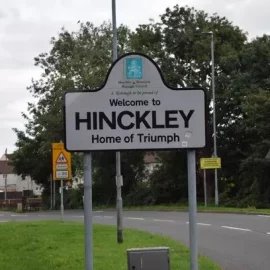
Belfast is one of the two semi-permanent homes of the Halliday family. Over the late 19th and early 20th century they seem to move seamlessly between Belfast and Glasgow. The connections between these cities was strong, travel by sea was cheap and fast and the work was similar – heavy industry and shipbuilding in particular.

Belfast from Irish: Béal Feirste meaning ‘mouth of the sand-bank ford is the capital and largest city of Northern Ireland, standing on the banks of the River Lagan on the east coast. It is the 10th-largest primary urban area in the United Kingdom and the second-largest city in Ireland. The population of the Belfast metropolitan area was 671,559 in 2011, the City of Belfast had a population of 293,298 and the Belfast Local Government District had a population 345,418 in 2021.
By the early 19th century, Belfast was a major port. It played an important role in the Industrial Revolution in Ireland, briefly becoming the biggest linen-producer in the world, earning it the nickname “Linenopolis”. By the time it was granted city status in 1888, it was a major centre of Irish linen production, tobacco-processing and rope-making. Shipbuilding was also a key industry; the Harland & Wolff shipyard, which built the RMS Titanic and SS Canberra, was the world’s largest shipyard. Industrialisation, and the resulting inward migration, made Belfast one of Ireland’s biggest cities. Following the partition of Ireland in 1921, Belfast became the seat of government for Northern Ireland. There was major communal violence in the city during partition. Belfast saw further severe violence and numerous bombings during the thirty years of the Troubles, c. 1969–1998, and parts of the city remain segregated between Catholics and Protestants.
Our Halliday family lived in the Shankhill Road, a traditionally protestant area but very close to the Catholic area. Canmore Street which was the family’s residence in 1900 is within touching distance of the PEACE WALL dividing the two communities.



